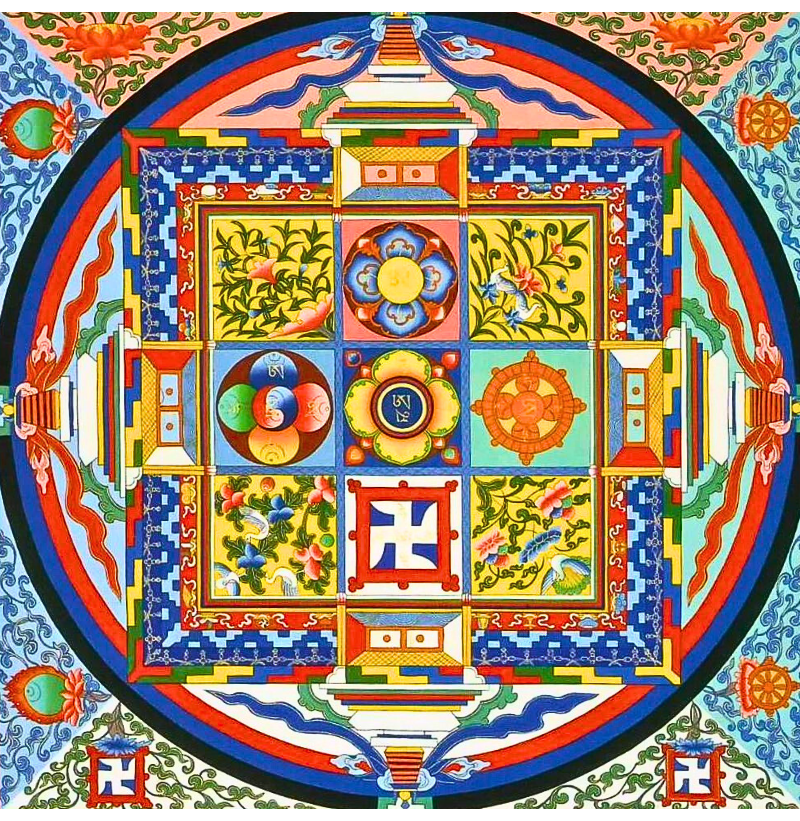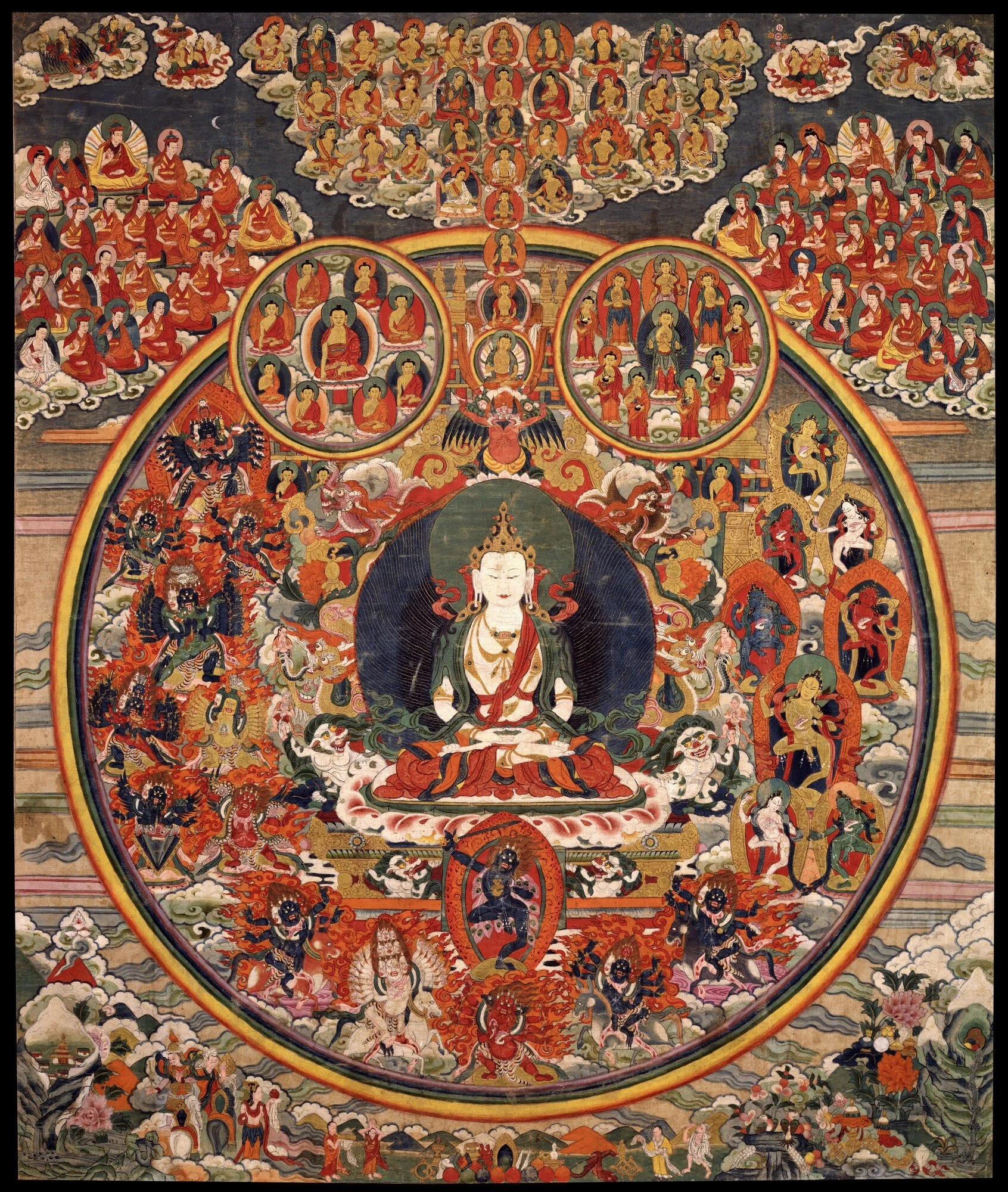What is Bön ?
The Yungdrung Bön (Bön) Lineage tradition is one of the oldest indigenous spiritual traditions in the world. Originating in Central Asia with Tongpa Shenrap Miwoche (considered by tradition to be a full Buddha), the Bön Lineage teachings have been transmitted unbroken from teacher to student for over 17,000 years. This profound and uninterrupted transmission through generations has ensured the preservation and vitality of the Bön tradition, teachings and practices across millennia.
Often referred to as Tibetan Bön Buddhism, Bön Lineage teachings share many similarities with Tibetan Buddhism yet maintain unique traditions, texts, rituals and practices intent on cultivating openness of heart, purification of obscurations and direct realisation of primordial awareness. Through study, contemplation and direct experience, we are guided by our teachers along a path to liberation which can, in some cases, be accomplished in a single lifetime.
Is Bön a Buddhist Tradition ?
According to the Bön tradition, these teachings were initiated into what is now considered part of north-western Tibet and Persia by Tonpa Shenra Miwoche, a fully enlightened being. With Tonpa Shenrap being a fully enlightened being or buddha, the Bön's teachings are considered Buddhist; however, they originate from a different lineage to Shakyamuni Buddha of India.
Whilst other schools of Buddhism trace their origins back to India's Buddha Shakyamuni, it is this difference in lineage which accounts for the variations in texts, practices and rituals. The core truths of the teachings remain consistent with both Bön and Buddhist traditions intent on cultivating wisdom and compassion in the heart-minds of all practitioners and their highest teachings providing a pathway to complete harmony within oneself and in relation to the outer world through all-pervasive realisation.
Yungdrung Bön Letter ‘A’
Symbolic of Dzogchen | (Tibetan: རྫོགས་པ་ཆེན་པོ་, Wylie: dzogs chen, lit. ‘Great Perfection’)
The Bön Lineage Tradition
The Bön Indo-Tibetan texts and meditation practices contain remarkably deep insight into the nature of the mind. They provide tremendous value individually and collectively by helping people alleviate the ever-increasing levels of stress and pressures in our daily life.
The revolutionary nature of these techniques is based on more than 100,000 volumes of text on the nature of the mind which has been developed over thousands of years. The teachings go far beyond mindfulness and have the ability to change the consciousness of anyone who practices them by directly heightening awareness and clarity of mind.
Preserving and regenerating this knowledge by revitalising indigenous Tibetan Bön practices within its last remaining indigenous setting in Mustang, Nepal is in the interest of human kind.
Bön is an ancient-yet-thriving tradition handed down from generation to generation. Bön has many sacred texts, known as the Kangyur and the Tengyur, in hundreds of volumes that are a vital repository of teachings, healing, meditative practices, and much more. However, it is with the guidance of our teachers and their skilful understanding of the spiritual path, that the teachings become fully alive, and we collectively benefit the most.
Yungdrung Bön Refuge Tree
(Tibetan: གཡུང་དྲུང་བོན་, Wylie: g.yung drung bon, lit. 'eternal Bon')
Bön Lineage Teachings
Bön is an ancient system of spiritual teachings that originated in the land of Zhang Zhung, now a part of north-western Tibet. The teachings of Bön are vast and rich, ranging from ancient rituals of maintaining harmony with the environment through to physical yogas, dream yogas and dzogchen, recognition of the true nature of mind. They guide us to reflect on our lives, recognize the role of aversion, attachment and ignorance in suffering, awaken our innate wisdom and manifest natural occurring positive qualities such as love, compassion, joy and equanimity. Bön teaches a truth that is primordial, unchanging and all-pervasive.
Sutra
Sutra includes the Theravada (“Hinayana”) teachings based on Renunciation. This is centred on impermanence - the turning away from the ever-changing material world to a spiritual path focussed on ethical and virtuous behaviour and the Mahayana teachings of Bodhicitta (aligning the mind towards enlightenment, knowing that this will benefit all beings).
Tantra
Tantra is the path of transformation. Working with the outer world and all our afflictive emotions, we transform all that appears or manifests in our lives as challenge, suffering or conflict, into the positive qualities of enlightenment. Examples of teachings from this path include the healing practices of the five elements (earth, water, fire, air and space), the generation stage practices of deity yoga, and the completion stage practices including Tummo (Inner Fire).
Dzogchen
Dzogchen means “Great Perfection.” Other teachings and practices use the conceptual mind to study, analyse and apprehend the nature of reality. From the perspective of dzogchen, however, everything is primordially perfect as it is and there is nothing to do, create, change or complete. What is missing is recognition of this nature. Dzogchen is a direct and immediate introduction to the inseparability of emptiness, or spaciousness; luminous awareness, or clarity; and the qualities that spontaneously manifest from that nondual awareness, including the four immeasurables of love, compassion, joy and equanimity
Outwardly, dzogchen consists of practices that lead us to recognise the nature of mind, just as it is in the present moment, without any mental fabrication. These can include foundational practices of zhiné (‘staying-calming’) concentration meditation and trekchö practice (‘thoroughly cutting through’) the habitual constructions of mind revealing the view of primordial purity beyond conceptual elaboration, through to more advanced practices including tummo (practice of inner heat) to help clear emotional blockages, and tögal (‘direct crossing’ or bypassing visions’) practice of purifying perception by recognising the naturally occurring Buddhafields.
Ultimately, dzogchen is the nature of mind that we discover for ourselves. It is expansive, self-illuminated and mirror-like: unstained by thought, appearance, feeling or experience. When we rest in the nature of mind, we are our true selves and able to fully integrate with all aspects of our lives and the world as it appears in all its diversity.
The Atri teachings of Dzogchen can be summarised as:
Appearance is Mind
Mind is Emptiness
Emptiness is Limitless
Limitless is Great Bliss
Upcoming Tibetan Bön Meditation Retreats & Courses
Preliminary Practices | Online Course
Deepening Awareness | Retreat 1
Inner Fire Practices | Retreat 2



